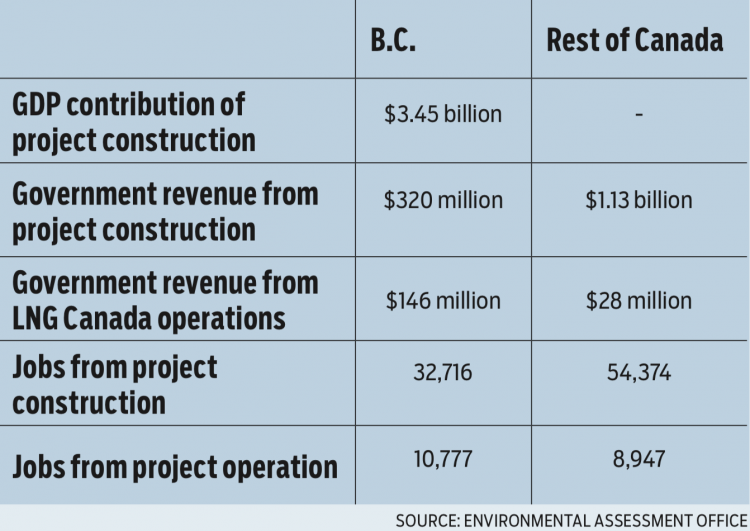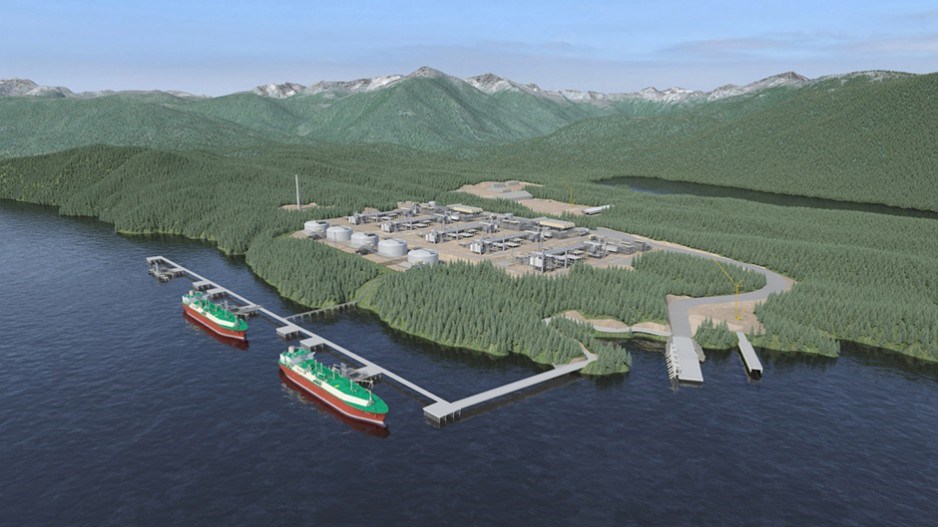The economic impact of the $40 billion LNG Canada project promises to be massive.
Construction alone is expected to add from $1.1 billion to $1.82 billion directly to the B.C.’s GDP over the estimated five-year construction period. It would also contribute an additional $1.01 billion to $1.63 billion indirectly through the purchase of supplies and additional economic activity and an estimated $200 million to $320 million to the B.C. government in tax revenue.
B.C. is expected to collect an additional $106 million to $146 million annually in revenue when the LNG plant is running.

The annual provincial carbon tax generated by the plant will total between $63 million and $88 million. The rest of the government revenue will come from PST ($28 million to $38 million) and from personal income tax paid by LNG Canada employees ($15 million to $20 million).
Ottawa is expected to collect $710 million to $1.13 billion in tax revenue from the project’s construction. But that will drop to annual revenue of $17 million to $28 million during the project’s operations.
The majority of the jobs that will be created by the project will be during the construction the LNG facilities (11,374 to 16,208) rather than the plant’s operations. During the construction, an additional 5,451 to 8,794 jobs are projected to be created indirectly via the purchase of supplies, services and other inputs.
The spending boost in the economy is expected to add another 4,783 to 7,714 jobs.
The number of jobs created directly by the project’s operations is expected to be significantly less (between 350 and 589). However, while the project’s operations will generate significantly fewer jobs than its construction, the operations are expected to create approximately 10,804 to 15,262 indirect jobs, nearly double the amount of indirect jobs created during its construction.
The economic benefit of the project doesn’t stop at the Rockies. The project’s construction is expected to create 14,312 to 18,683 direct and another 22,474 to 35,691 in indirect and induced jobs throughout the rest of Canada.
The project’s operation is expected to create 6,292 to 8,974 jobs in the rest of the country, with only 64 to 116 of those being directly related to the LNG operation




